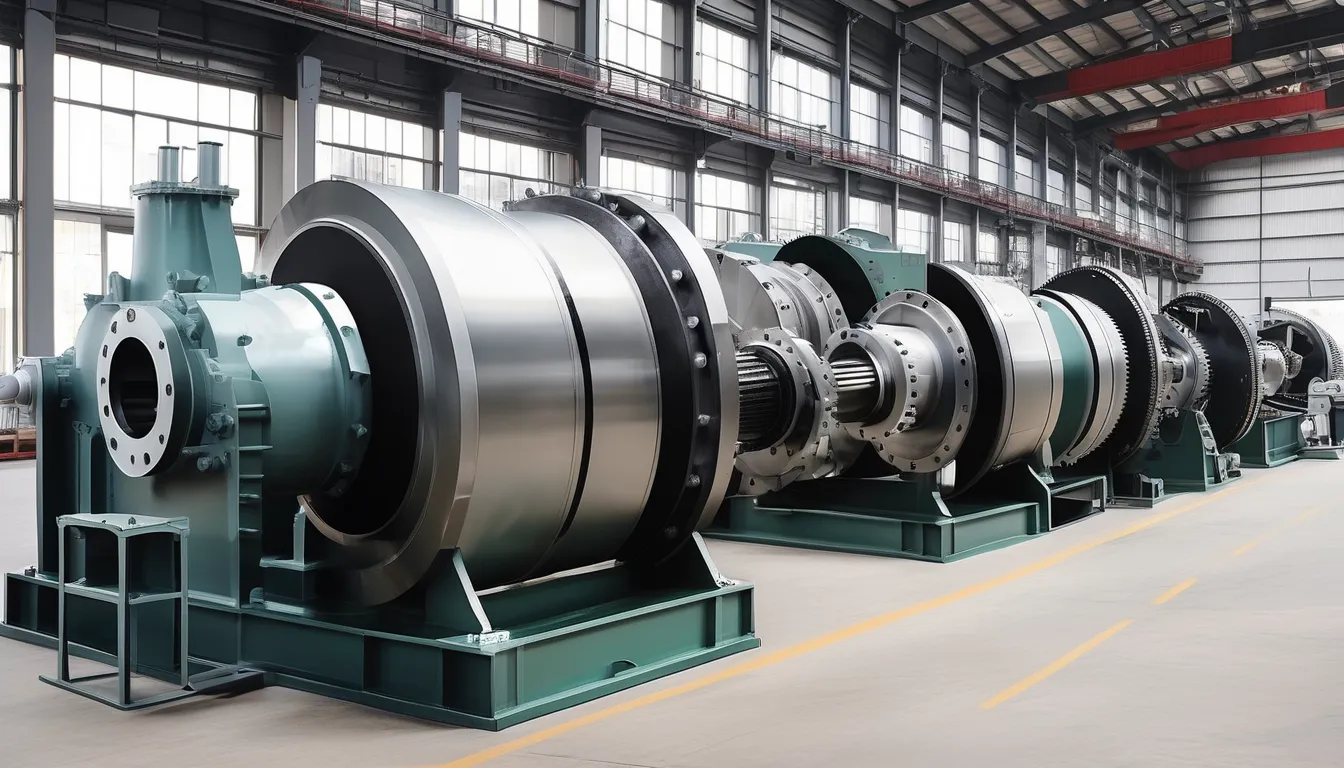When you consider the performance of a gearbox, several key factors come into play that can significantly impact its efficiency and longevity. From the materials you choose to the design and configuration of the gears, each decision influences how well the gearbox operates under various conditions. Additionally, the lubrication methods you implement and the environments in which the gearbox functions further shape its performance. Understanding these elements is crucial for optimizing efficiency, but what happens when one factor falls short? Let’s explore the intricacies involved.
Material Selection
When it comes to gearboxes, selecting the right materials is crucial for optimal performance. You need to consider factors like strength, durability, and weight when choosing materials for your gears and housing.
Steel, for instance, offers excellent strength and wear resistance, making it a popular choice for high-load applications. However, if weight is a concern, you might opt for aluminum or composite materials, which can significantly reduce the overall weight of your gearbox without sacrificing too much performance.
Don’t forget about the environmental conditions your gearbox will face. For corrosive environments, materials like stainless steel or specialized coatings can help prevent rust and degradation.
Additionally, you should think about lubrication compatibility; certain materials work better with specific lubricants, impacting efficiency and lifespan.
Lastly, consider the manufacturing processes involved. Some materials are easier to machine or mold, which can streamline production and reduce costs.
By carefully selecting the right materials, you can ensure your gearbox operates efficiently and reliably, ultimately enhancing its performance and longevity in various applications.
Gear Design and Configuration
Selecting the right materials sets the stage for effective gear design and configuration. You want to ensure that your gears aren’t just durable but also suited to the specific application.
Think about the gear type—spur, helical, bevel, or worm—and how each design influences load distribution and efficiency.
When you configure your gears, consider the gear ratio. This affects torque and speed; an optimal ratio ensures your system performs at peak efficiency.
Don’t overlook the importance of gear tooth design, either. Tooth shape, size, and the number of teeth all play critical roles in minimizing backlash and wear.
Additionally, ensure proper alignment during assembly. Misalignment can lead to increased wear and potential failure, so take your time to achieve precision.
Factor in the mounting configuration as well; whether you choose a fixed or floating design can impact performance and maintenance.
Lubrication Methods
Effective lubrication methods are crucial for maintaining optimal gearbox performance and extending the lifespan of gears. Choosing the right lubrication technique can make a significant difference in efficiency and reliability.
Here are four key lubrication methods you should consider:
- Oil Bath Lubrication: This method involves submerging gears in oil, providing consistent coverage and cooling. It’s ideal for high-speed applications.
- Grease Lubrication: Grease is often used in applications where oil leakage is a concern. It provides good adhesion and reduces wear, making it suitable for slow-moving gears.
- Forced Lubrication: In this method, oil is pumped under pressure to the gear surfaces. It ensures a continuous supply of lubricant, reducing the risk of overheating and wear.
- Splash Lubrication: Gears create a splash effect that circulates oil. It’s a simple and cost-effective method but mightn’t be suitable for all applications, especially high-speed ones.
Operating Conditions
Understanding the operating conditions of your gearbox is essential for optimizing its performance and longevity. The environment in which your gearbox operates significantly impacts its efficiency and durability. Factors like temperature, load, and humidity can create varying stresses on the system, affecting performance.
High temperatures can lead to increased wear and tear on components, while low temperatures may cause lubricant viscosity issues. You need to monitor these temperatures closely to ensure they stay within recommended limits.
Additionally, consider the load conditions: intermittent or constant loads can affect how your gearbox functions. If you’re consistently exceeding the manufacturer’s load ratings, you’ll likely shorten its lifespan.
Humidity and contamination also play crucial roles. Excess moisture can cause rust and corrosion, while dirt and debris can lead to abrasive wear. Always ensure that the operating environment is clean and dry, and use appropriate seals to reduce the ingress of contaminants.
Ultimately, understanding these operating conditions enables you to make informed decisions about your gearbox’s setup and usage. By doing so, you’ll enhance not just its performance but also its reliability and lifespan, ensuring you get the most out of your investment.
Maintenance Practices
Regular maintenance is crucial for keeping your gearbox running smoothly and efficiently. By staying proactive, you can prevent costly breakdowns and extend the lifespan of your equipment.
Here are some key maintenance practices you should follow:
- Regular Oil Changes: Check and replace the oil as per manufacturer recommendations. Clean oil reduces friction and wear on internal components.
- Inspect Seals and Gaskets: Routinely examine seals and gaskets for signs of wear or leaks. Replacing damaged seals can prevent oil loss and contamination.
- Monitor Temperature: Keep an eye on operating temperatures. Overheating can lead to serious damage, so ensure your cooling systems are functioning properly.
- Conduct Vibration Analysis: Regularly assess vibration levels. Unusual vibrations can indicate misalignment or wear, allowing you to address issues before they escalate.
Conclusion
In summary, the performance of your gearbox manufacturer hinges on several key factors. By carefully selecting materials, designing effective gear configurations, employing the right lubrication methods, and considering operating conditions, you can enhance reliability and efficiency. Don’t forget that regular maintenance is crucial to prevent issues and extend lifespan. By paying attention to these aspects, you can ensure your gearbox runs smoothly and effectively, ultimately leading to better performance and durability in your applications.

